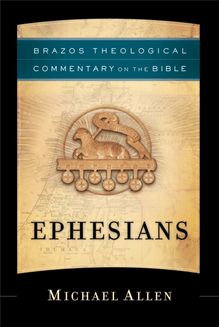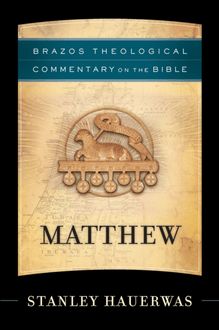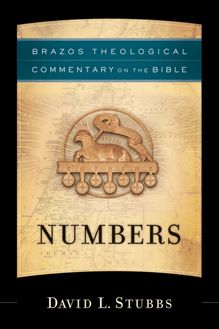Exodus (Brazos Theological Commentary on the Bible) , livre ebook
220
pages
English
Ebooks
2016
Vous pourrez modifier la taille du texte de cet ouvrage
Obtenez un accès à la bibliothèque pour le consulter en ligne En savoir plus
Découvre YouScribe en t'inscrivant gratuitement
Découvre YouScribe en t'inscrivant gratuitement
220
pages
English
Ebooks
2016
Vous pourrez modifier la taille du texte de cet ouvrage
Obtenez un accès à la bibliothèque pour le consulter en ligne En savoir plus
Publié par
Date de parution
05 juillet 2016
Nombre de lectures
1
EAN13
9781493402588
Langue
English
Poids de l'ouvrage
2 Mo
Publié par
Date de parution
05 juillet 2016
Nombre de lectures
1
EAN13
9781493402588
Langue
English
Poids de l'ouvrage
2 Mo
Cover
Series Page
Brazos Theological Commentary on the Bible
Series Editors
R. R. Reno, General Editor
First Things
New York, New York
Robert W. Jenson (1930–2017)
Center of Theological Inquiry
Princeton, New Jersey
Robert Louis Wilken
University of Virginia
Charlottesville, Virginia
Ephraim Radner
Wycliffe College
Toronto, Ontario
Michael Root
Catholic University of America
Washington, DC
George Sumner
Episcopal Diocese of Dallas
Dallas, Texas
Title Page
Copyright Page
© 2016 by Thomas Joseph White, OP
Published by Brazos Press
a division of Baker Publishing Group
P.O. Box 6287, Grand Rapids, MI 49516-6287
www.brazospress.com
Ebook edition created 2016
Ebook corrections 11.26.2019
All rights reserved. No part of this publication may be reproduced, stored in a retrieval system, or transmitted in any form or by any means—for example, electronic, photocopy, recording—without the prior written permission of the publisher. The only exception is brief quotations in printed reviews.
Library of Congress Cataloging-in-Publication Data is on file at the Library of Congress, Washington, DC.
ISBN 978-1-4934-0258-8
Nihil Obstat:
Rev. Stephen D. Ryan, OP
Imprimi Potest:
Very Rev. Kenneth R. Letoile, OP
Prior Provincial
February 18, 2015
Nihil Obstat:
Rev. Christopher Begg, STD, PhD
Censor Deputatus
Imprimatur:
Most Rev. Barry C. Knestout
Auxiliary Bishop of Washington
Archdiocese of Washington
January 29, 2015
The nihil obstat and imprimatur are official declarations that a book or pamphlet is free of doctrinal or moral error. There is no implication that those who have granted the nihil obstat and the imprimatur agree with the content, opinions, or statements expressed therein.
Unless otherwise noted, all scripture quotations are from the Revised Standard Version of the Bible, copyright 1952 [2nd edition, 1971] by the Division of Christian Education of the National Council of the Churches of Christ in the United States of America. Used by permission. All rights reserved.
Scripture quotations labeled ESV are from The Holy Bible, English Standard Version® (ESV®), copyright © 2001 by Crossway, a publishing ministry of Good News Publishers. Used by permission. All rights reserved. ESV Text Edition: 2011
Scripture quotations labeled NASB are from the New American Standard Bible®, copyright © 1960, 1962, 1963, 1968, 1971, 1972, 1973, 1975, 1977, 1995 by The Lockman Foundation. Used by permission. (www.Lockman.org)
Scripture quotations labeled NIV are from the Holy Bible, New International Version®. NIV®. Copyright © 1973, 1978, 1984, 2011 by Biblica, Inc.™ Used by permission of Zondervan. All rights reserved worldwide. www.zondervan.com.
Scripture quotations labeled NRSV are from the New Revised Standard Version of the Bible, copyright © 1989, by the Division of Christian Education of the National Council of the Churches of Christ in the United States of America. Used by permission. All rights reserved.
Dedication
This book is dedicated to my father—mentor and friend.
As a father has compassion on his children, so the Lord has compassion on those who fear him.
Psalm 103:13
Epigraph
Two errors: 1. To take everything literally. 2. To take everything spiritually.
—Blaise Pascal, Pensées
By a prophet the L ORD brought Israel up from Egypt,and by a prophet he was preserved.
—Hosea 12:13
I saw a Lamb standing, as though it had been slain.
—Revelation 5:6
We are apt to treat pretences to a divine mission or to supernatural powers as of frequent occurrence, and on that score to dismiss them from our thoughts; but we cannot so deal with Judaism. When mankind had universally denied the first lesson of their conscience by lapsing into polytheism, is it a thing of slight moment that there was just one exception to the rule, that there was just one people who, first by their rulers and priests, and afterwards by their own unanimous zeal, professed, as their distinguishing doctrine, the Divine Unity and Government of the world, and that, moreover, not only as a natural truth, but as revealed to them by that God Himself of whom they spoke,—who so embodied it in their national polity, that a Theocracy was the only name by which it could be called? It was a people founded and set up in Theism, kept together by Theism, and maintaining Theism for a period from first to last of 2000 years, till the dissolution of their body politic; and they have maintained it since in their state of exile and wandering for 2000 years more. . . . The preaching of this august dogma begins with them. They are its witnesses and confessors, even to torture and death; on it and its revelation are molded their laws and government; on this their politics, philosophy, and literature are founded; of this truth their poetry is the voice, pouring itself out in devotional compositions which Christianity, through all its many countries and ages, has been unable to rival; on this aboriginal truth, as time goes on, prophet after prophet bases his further revelations, with a sustained reference to a time when, according to the secret counsels of its Divine Object and Author, it is to receive completion and perfection,—till at length that time comes.
—John Henry Newman, A Grammar of Assent
Contents
Cover i
Series Page ii
Title Page iii
Copyright Page iv
Dedication v
Epigraph vi
Series Preface x
Acknowledgments xvii
Abbreviations xviii
Introduction 1
The Darkness and Light of God
The Divisions of the Book of Exodus
The Four Senses of Scripture
1. Deliverance from Egypt: Exodus 1–12 25
Pharaoh, Genocide, and Universal Moral Weakness (Exod. 1)
Vocation to Prophecy (Exod. 2)
The Divine Name (Exod. 3)
Introduction to Exodus 4–11: Catechesis on Divine Omnipotence
Mirabilia Dei as a Purification of Human Superstition (Exod. 4)
Religious Error as Political Oppression (Exod. 5)
The Name of Mercy (Exod. 6)
The Hard-Heartedness of Pharaoh: God and Free Will (Exod. 7:1–7)
The Theological Meaning of the Plagues
Confrontation with the Pharaoh (Exod. 7:8–13)
First Plague: Blood (Exod. 7:14–24)
Second Plague: Frogs (Exod. 7:25–8:15)
Third Plague: Gnats (Exod. 8:16–19)
Fourth Plague: Flies (Exod. 8:20–32)
Fifth Plague: Animal Pestilence (Exod. 9:1–7)
Sixth Plague: Boils (Exod. 9:8–12)
Seventh Plague: Hail (Exod. 9:13–35)
Eighth Plague: Locusts (Exod. 10:1–20)
Ninth Plague: Darkness (Exod. 10:21–29)
Tenth Plague: Death of the Firstborn (Exod. 11:1–10)
Excursus: The Death of the Firstborn and the Transcendent Justice of God
The Passover Lamb (Exod. 12:1–51)
2. Wilderness: Exodus 13–18 108
Filial Adoption (Exod. 13:1–16)
The Red Sea: What Do the Symbols Mean? (Exod. 13:17–15:21)
Manna and Water: Signs of Salvation (Exod. 15:22–17:7)
Adversity of Gentiles (Exod. 17:8–16)
Contribution of Gentiles (Exod. 18)
3. Covenant: Exodus 19–24 135
Introduction to the Covenant Material
Sinai (Exod. 19)
The Decalogue: The Heart of the Moral Law (Exod. 20)
Juridical Law: The Book of the Covenant (Exod. 20:22–23:33)
Ratification of the Covenant by Sacrifice (Exod. 24:1–11)
Divine Glory (Exod. 24:12–18)
4. Cultic Rituals: Exodus 25–31 224
Ceremonial Law: Aquinas on the Sacraments of the Old Law
The Ark and the Tabernacle (Exod. 25)
The Tent of Meeting (Exod. 26)
The Altar (Exod. 27)
The Priesthood of Aaron (Exod. 28–29)
Outward Instruments of Worship (Exod. 30:1–31:11)
The Sabbath (Exod. 31:12–18)
5. Fall and Eschatological Restoration: Exodus 32–40 264
What Is Idolatry? The Symbol of the Golden Calf (Exod. 32:1–6)
Divine Wrath and Atonement (Exod. 32:7–35)
Divine Mercy and Transfiguration (Exod. 33–34)
Building the Tabernacle as Prefiguration of the Temple and of Christ (Exod. 35:1–40:38)
Epilogue: The Heavenly Temple and the Lamb Who Was Slain 289
Coda: The Divine Name and the Metaphysics of Exodus 292
Bibliography 305
Subject Index 307
Name Index 309
Scripture Index 311
Back Cover 317
Series Preface
Near the beginning of his treatise against gnostic interpretations of the Bible, Against Heresies , Irenaeus observes that scripture is like a great mosaic depicting a handsome king. It is as if we were owners of a villa in Gaul who had ordered a mosaic from Rome. It arrives, and the beautifully colored tiles need to be taken out of their packaging and put into proper order according to the plan of the artist. The difficulty, of course, is that scripture provides us with the individual pieces, but the order and sequence of various elements are not obvious. The Bible does not come with instructions that would allow interpreters to simply place verses, episodes, images, and parables in order as a worker might follow a schematic drawing in assembling the pieces to depict the handsome king. The mosaic must be puzzled out. This is precisely the work of scriptural interpretation.
Origen has his own image to express the difficulty of working out the proper approach to reading the Bible. When preparing to offer a commentary on the Psalms he tells of a tradition handed down to him by his Hebrew teacher:
The Hebrew said that the whole divinely inspired scripture may be likened, because of its obscurity, to many locked rooms in our house. By each room is placed a key, but not the one that corresponds to it, so that the keys are scattered about beside the rooms, none of them matching the room by which it is placed. It is a difficult task to find the keys and match them to the rooms that they can open. We therefore know the scriptures that are obscure only by taking the points of departure for understanding them from another place because they have their interpretive principle scattered among them. 1
As is the case for Irenaeus, scriptural interpretation is not purely local. The key in Genesis may best fit the door of Isaiah, which in turn opens up the meaning of Matthew. The mosaic must be put together with an eye toward the overall plan.
Iren












